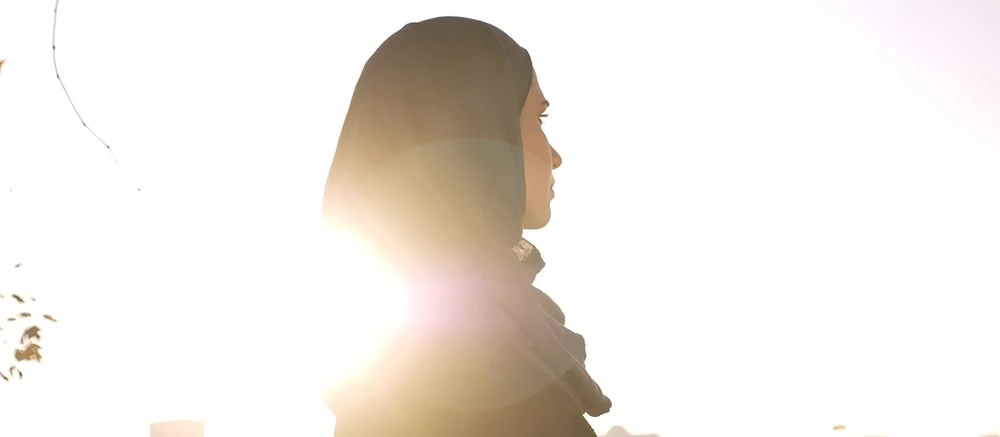What Extent of Raising the Hijab Is Considered to Be like the Hump of a Camel?
Shafi'i Fiqh
Answered by Shaykh Irshaad Sedick
Question
Is it lawful to slightly enlarge my head?
I’m not referring to the bun, which is always below my neck. I’m referring to the upper skull part. I use a band of three centimeters to raise it slightly. Will it fall under the category whom the Prophet (may Allah bless him and give him peace) mentions as the ‘head like the hump of a camel?
What extent of raising is considered to be like the hump of a camel?
Answer
In the Name of Allah, the Most Merciful and Compassionate. May Allah guide us to the belief and way of life that is pleasing to Him.
“Raising” your hair, as you have described, is lawful, and Allah knows best.
This question was addressed by my dear teacher, Mawlana Abduraghmaan Khan. The following answer has been adapted from his.
Heads like Camel-Humps
The hadith mentioning heads resembling camel humps is often thought to be a basis for the argument that donning the headscarf in a particular style is unlawful.
The Prophet (may Allah bless him and give him peace) said: “There are two groups of the people of the fire, whom I have not yet seen. A group of people carrying whips resembling the tails of cattle, with which they will lash people. And another is clothed women, yet naked, disinclined from Allah’s obedience and causing others to follow in their ways. Their heads are likened to the humps of camels. They will not enter Jannah nor smell its fragrance – it’s fragrance could (usually) be sensed from a far distance, a journey of many (miles).” [Muslim]
Various Interpretations
“Clothed, yet naked” in the hadith could mean that they are clothed with the blessings of Allah, yet naked from showing gratitude. It could also mean that they are clothed with transparent clothing through which the color of their skin may appear.
“Disinclined from Allah’s obedience and causing others to follow in their ways” is the more probable interpretation of the words of the Messenger (may Allah bless him and give him peace), “ma’ilat, mumilat.”
The Prophet’s words (may Allah bless him and give him peace), “Their heads are like the humps of camels (al-bukht al-ma’ila),” have been interpreted in several ways.
Imam Al-Nawawi explained it as, “they enlarge or add volume to their heads by wrapping it with either a turban, a cloth or the like.”
Al-Marizi said, “a possible meaning of (the phrase) is that they desire men and do not lower their heads and gazes.”
Qadi ‘Iyad described that they comb their hair in a certain way and then gather it all to the top of the head, thus resembling a camel’s hump. Other discussions are around whether the hump is on the side of the head or not. [Nawawi, Sharh Sahih Muslim]
Based on the above, the hadith has various interpretations and cannot categorically be referring to a specific hijab fashion.
Who Are These Women?
None of the scholars above suggested that the hairstyle or manner of donning the scarf is impermissible (haram). The Prophet (may Allah bless him and give him peace) lists not one but several qualities of a specific group of women.
Imam Al-Nawawi stated that the described group of women were already around in his time – the seventh century. Potentially matching one of these descriptions does not make a woman from that described group and does not mean that she is destined for the fire.
To further clarify, many women wear their scarves (and hair beneath them) in a manner that may arguably resemble a hump of sorts. They are, however, not partially naked, nor do they disincline from the obedience of Allah. Many of them are righteous and observe the law of Allah in an exemplary manner. The hadith in question, therefore, does not refer to them, and Allah knows best.
In conclusion, we do not consider the way you may be donning your headscarf unlawful as long as all your hair is covered appropriately and you are not attracting unnecessary gazes from marriageable (non-mahram) men.
I pray this is of benefit and that Allah guides us all.
[Shayh] Irshaad Sedick
Checked and Approved by Shaykh Faraz Rabbani
Shaykh Irshaad Sedick was raised in South Africa in a traditional Muslim family. He graduated from Dar al-Ulum al-Arabiyyah al-Islamiyyah in Strand, Western Cape, under the guidance of the late world-renowned scholar, Shaykh Taha Karaan.
Shaykh Irshaad received Ijaza from many luminaries of the Islamic world, including Shaykh Taha Karaan, Mawlana Yusuf Karaan, and Mawlana Abdul Hafeez Makki, among others.
He is the author of the text “The Musnad of Ahmad ibn Hanbal: A Hujjah or not?” He has served as the Director of the Discover Islam Centre and Al Jeem Foundation. For the last five years till present, he has served as the Khatib of Masjid Ar-Rashideen, Mowbray, Cape Town.
Shaykh Irshaad has thirteen years of teaching experience at some of the leading Islamic institutes in Cape Town). He is currently building an Islamic online learning and media platform called ‘Isnad Academy’ and pursuing his Master’s degree in the study of Islam at the University of Johannesburg. He has a keen interest in healthy living and fitness.
